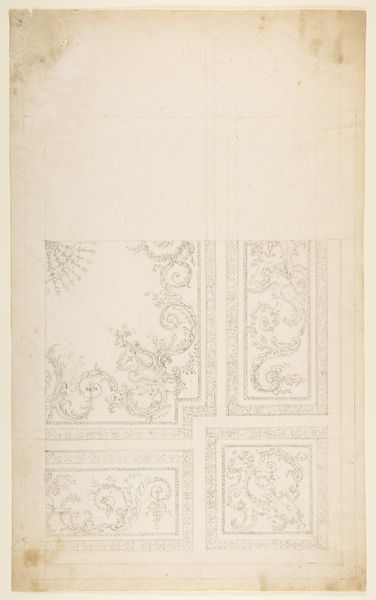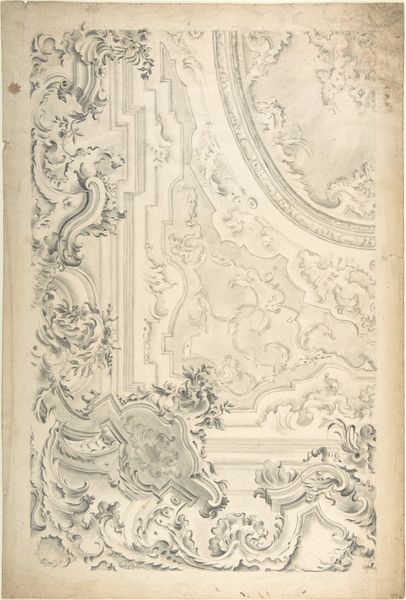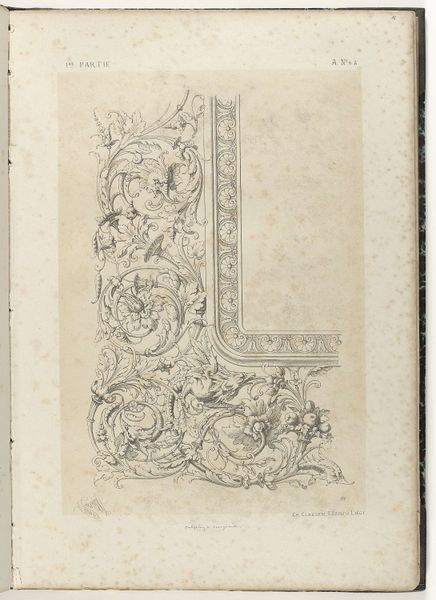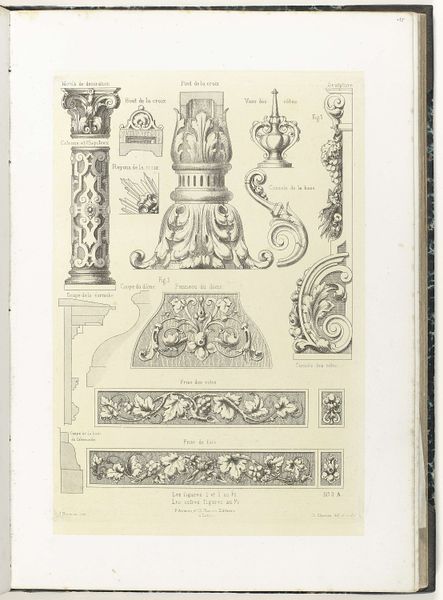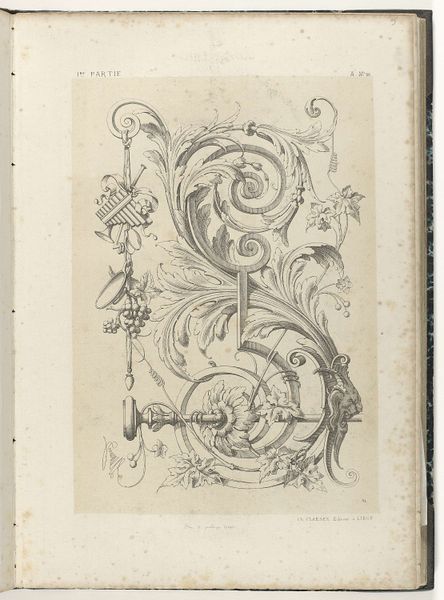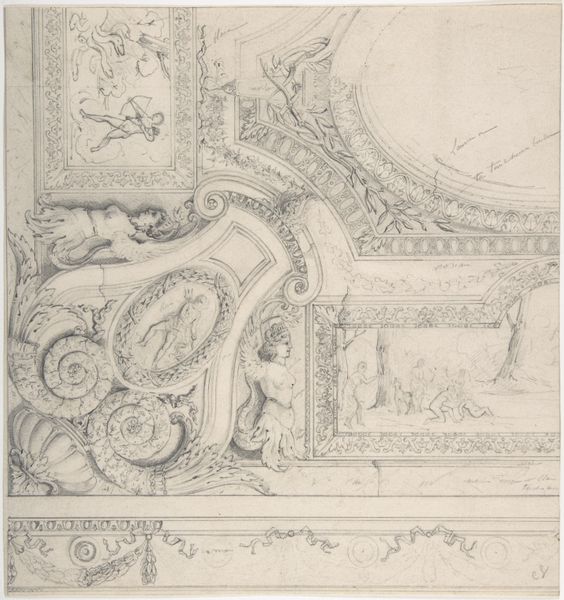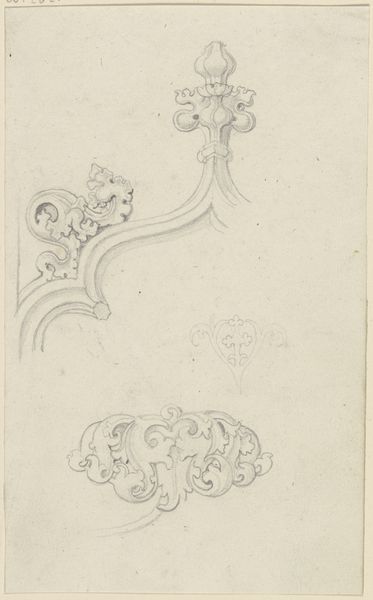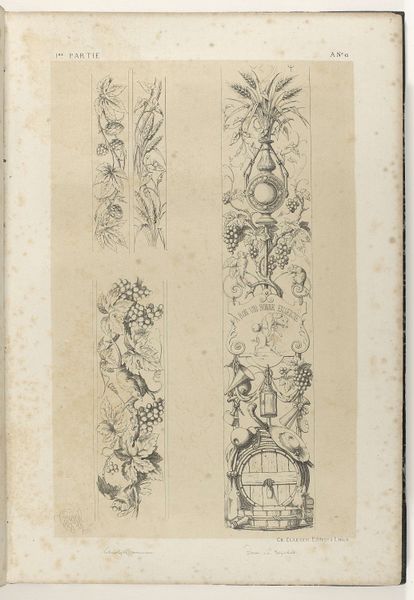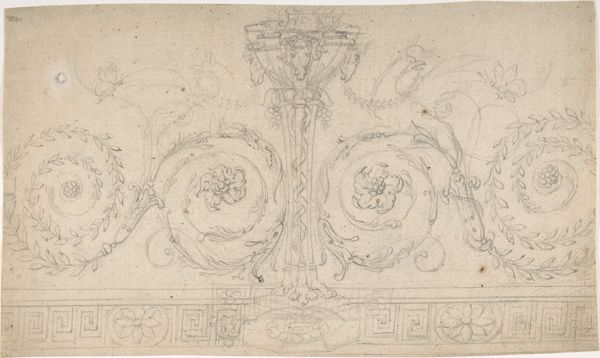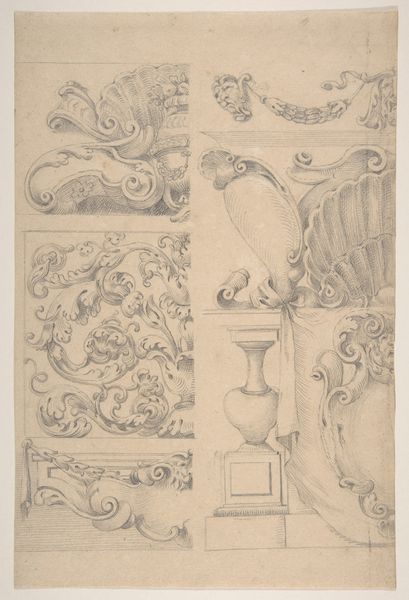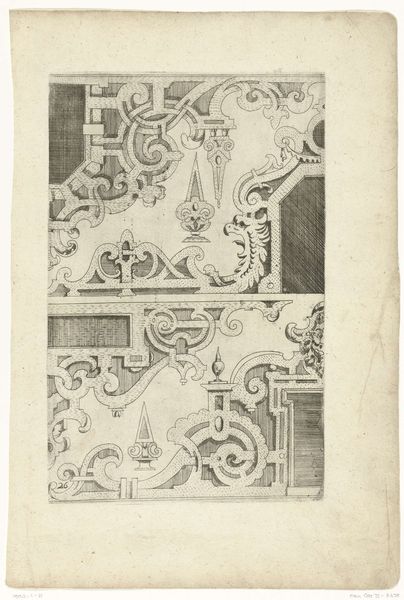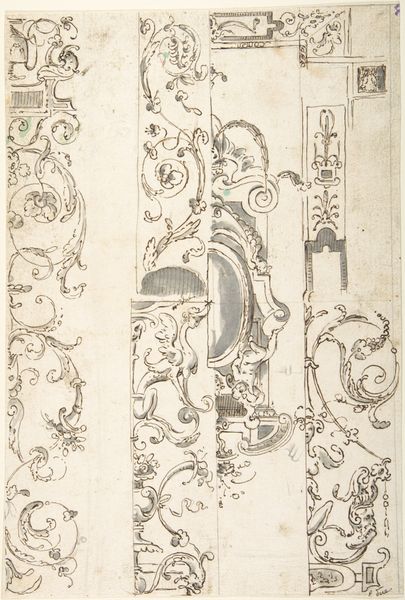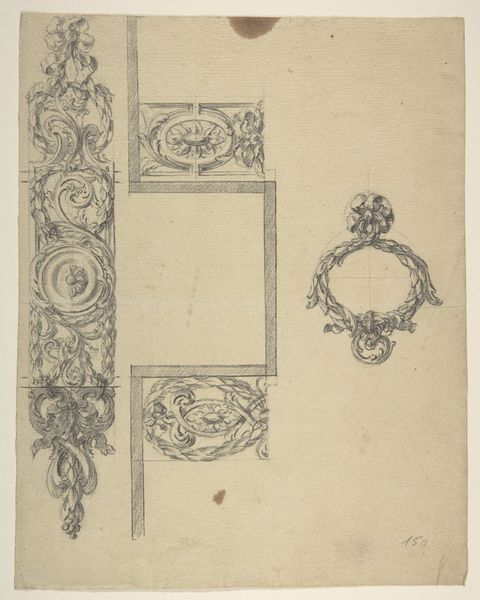
drawing, print, ink, pen, architecture
#
drawing
#
aged paper
#
neoclassicism
# print
#
pen illustration
#
pen sketch
#
old engraving style
#
personal sketchbook
#
ink
#
pen-ink sketch
#
pen work
#
sketchbook drawing
#
pen
#
storyboard and sketchbook work
#
decorative-art
#
sketchbook art
#
architecture
Dimensions: height 418 mm, width 290 mm
Copyright: Rijks Museum: Open Domain
Editor: Here we have "Plafond en fries" or "Ceiling and Frieze," an ink and pen drawing by J. Herman, dating back to the late 19th century. The intricate designs are captivating, and the old paper adds a sense of history and fragility. What immediately grabs me is the almost obsessive attention to detail in every flourish. What do you notice when you look at it? Curator: The interplay between geometric structure and organic form is fascinating. The drawing reveals a sophisticated understanding of Neoclassical principles through its measured application of ornament. Observe the carefully constructed grid juxtaposed with the fluidity of the floral and figural elements. Note how the use of line – its thickness, direction, and density – defines shape and texture. Editor: It looks almost like a template. I wonder what type of building these friezes may have adorned. How might these decorative elements affect the experience of someone within that architectural space? Curator: Precisely! The architect or decorator sought to create a unified aesthetic experience. The ornamental elements of putti and stylized vegetation don't seem entirely functional and serve a more important purpose: visually communicating status and refined taste through a clear classical articulation. Consider also how the light would have interacted with the physical frieze; what is the relationship between form and perception in creating an aesthetic space? Editor: So, beyond mere decoration, it's about shaping the experience and communicating certain values! Curator: Yes, the artwork functions as a set of formal propositions that define visual organization, compositional structure, and material exploration as core creative ideas in the architectural context. Editor: This deep dive into the formal qualities really highlighted how much intentionality goes into something seemingly decorative. Curator: Indeed, by analyzing its structure, we gain insight into its function.
Comments
No comments
Be the first to comment and join the conversation on the ultimate creative platform.
